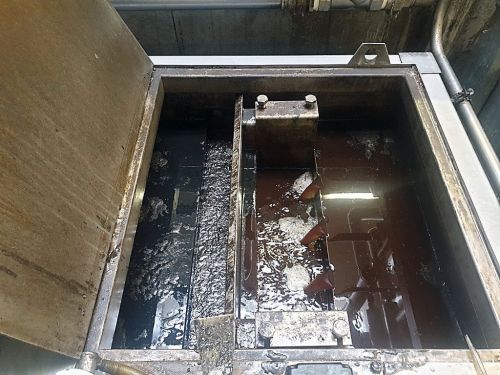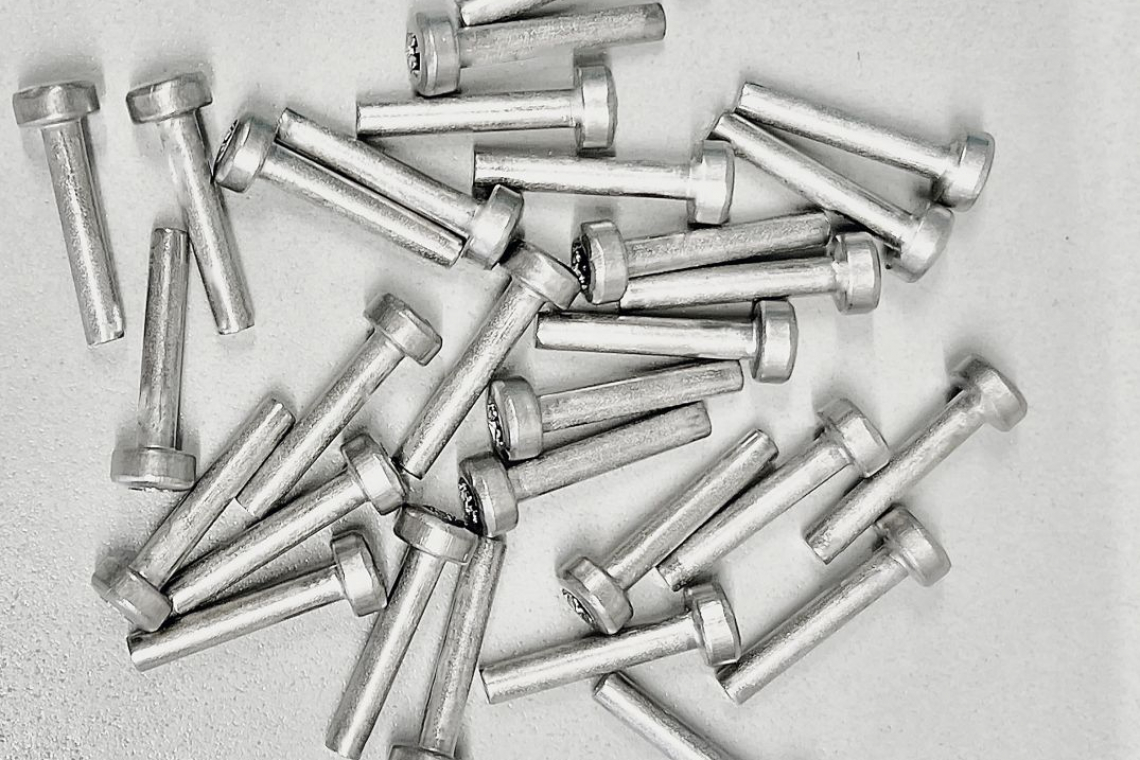Dephosphating is one of the most important steps in the production of cold-formed, high-strength screws. The use of a new low-temperature dephosphating system at a leading manufacturer of fasteners shows that considerable savings in energy, costs andCO2 can be achieved.
Dephosphating offers great potential for optimization
The goal of making production more resource-efficient and sustainable is high on the list of priorities for practically all industrial companies. At a leading manufacturer of fasteners, measures to save energy and increase efficiency are also supporting the transformation to a climate-neutral company by the mid-2030s. Dephosphatization is also a key issue in this respect.
 For an optimized bath life, the low-temperature dephosphating system contains application-specific processing additivesPhosphatedraw steel wire is predominantly used for screw production. The phosphate acts as a separating layer between the workpiece and tool as well as a lubricant carrier and ensures optimum behavior during cold forming. Between the various production steps, the fasteners are usually cleaned to prevent carryover of the processing media. Dephosphating is carried out before heat treatment, as phosphate and lubricant layers remaining on the components can have a negative effect, for example through the formation of delta ferrite, burnt-in residues and other surface defects. In addition, damage can occur to the hardening systems.
For an optimized bath life, the low-temperature dephosphating system contains application-specific processing additivesPhosphatedraw steel wire is predominantly used for screw production. The phosphate acts as a separating layer between the workpiece and tool as well as a lubricant carrier and ensures optimum behavior during cold forming. Between the various production steps, the fasteners are usually cleaned to prevent carryover of the processing media. Dephosphating is carried out before heat treatment, as phosphate and lubricant layers remaining on the components can have a negative effect, for example through the formation of delta ferrite, burnt-in residues and other surface defects. In addition, damage can occur to the hardening systems.
Until now, dephosphating has usually been carried out using complex media formulations with four, five or more components and temperatures between 75 and 80 °C, which is very energy-intensive. The use of a modern dephosphating system, which develops its cleaning effect even at low temperatures, enables considerable energy and cost savings.
Stockmeier Chemie, a long-standing partner for dephosphating and cleaning media, has now introduced such a medium. The further development contains only three components: the liquid dephosphating system, consisting of Lerabilt268 and Leraplex63, as well as an application-specific treatment additive to optimize the bath life. Thanks to the special formulation of the system, a stable, process-reliable dephosphating quality is achieved from as low as 50 °C. This new development was tested in comparison with a conventional product with four components.
Optimum results, longer bath service life and greater process reliability
For the tests, two almost identical cleaning/dephosphating systems were operated with the different products. The established product consisting of four components was used at temperatures of 75 to 80 °C. With the new solution, it was decided for safety reasons not to dephosphate at the possible 50 °C, but at 60 to 65 °C instead.
The low-temperature dephosphating system not only achieved better quality in the comparative tests, but also proved to be safer and easier to handle. The latter was due to the lower number of components that had to be precisely dosed by the personnel at the systems. One component less made a bigger difference than generally assumed. In addition, the new system reacted more tolerantly to deviations in dosing: stable dephosphating results were achieved even if the mixing ratio was not exactly adhered to. This results in improved process reliability. Another advantage identified during the tests was a longer bath service life. This results from the high demulsifying performance of the new dephosphatizer, to which a powerful treatment additive is added. As a result, cleaned oil is removed more effectively from the cleaning solution via the oil separator.
High savings in energy andCO2 emissions
Although the top priority was the quality of the dephosphatization, resource efficiency was also of great importance. Lowering the temperature by 10 to 15 °C already leads to considerable energy savings. For the manufacturer of connecting parts involved, this was further increased by the fact that the dephosphating bath, which is operated at a lower temperature and with lower media concentrations, can now also be used for cleaning and degreasing the parts after the various production steps. The company previously used a separate tank for these treatments, which also had to be filled, heated and maintained. The resources used for this are now no longer required.


